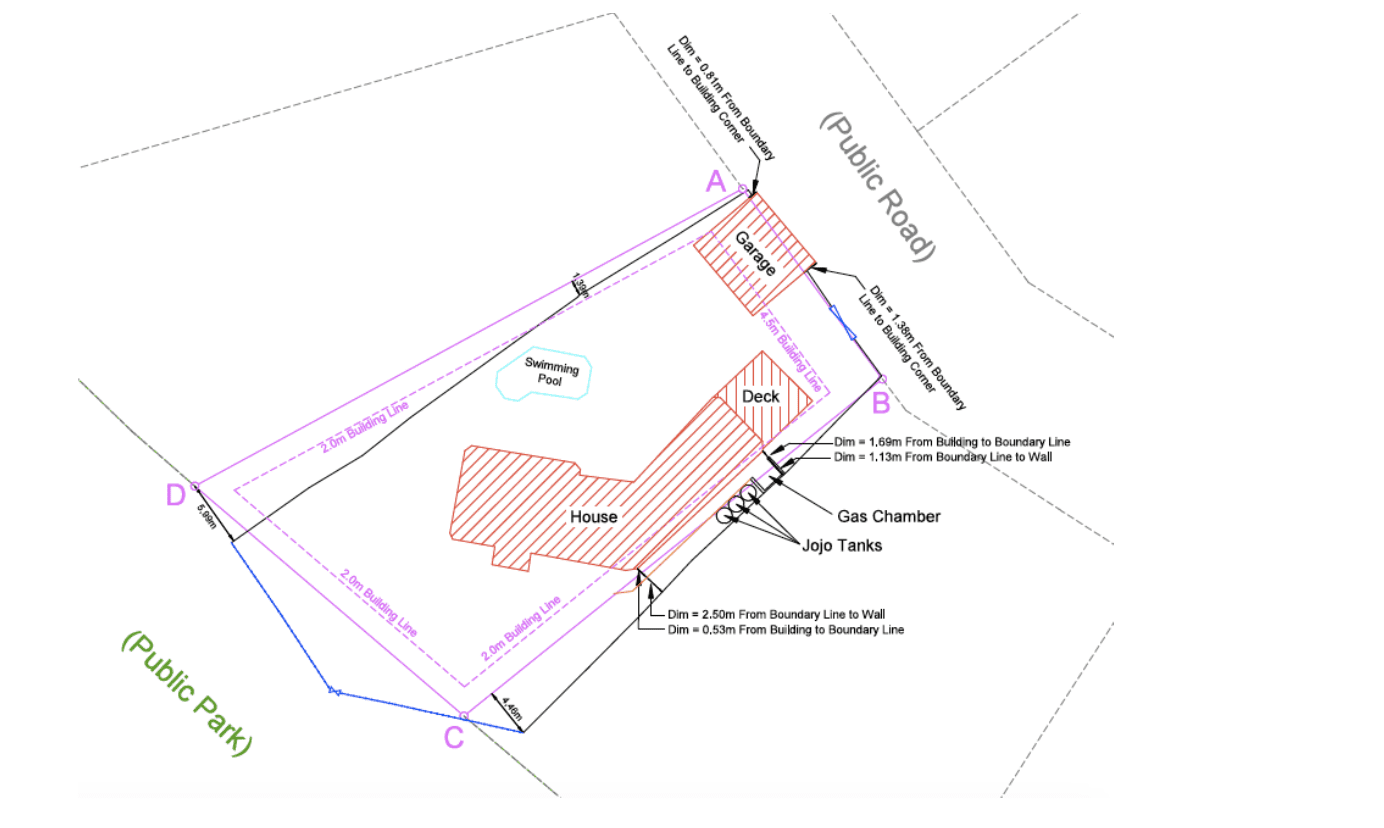It is always better to start off knowing where your property boundaries are before you buy or build, rather than having to resolve an expensive encroachment later. Complications with banks and neighbours can arise when boundaries are ignored. You would therefore prefer to save both time and money by making sure that the boundaries and structures are correct at the start, rather than have to deal with costly litigation or reconstruction in the future.
Cadastral boundaries are lawfully defined property boundaries which define the extent of land ownership. Straight line cadastral boundaries are physically demarcated using a variety of different types of beacons. (In some cases, a river, road or the high water mark of the sea forms a cadastral boundary). By law, property beacons may only be placed by, or under the supervision, of a registered Professional Land Surveyor (PLS). Once placed, it is the property owner’s responsibility to protect their beacons so that all future buildings and walls are built in the correct position to avoid future boundary disputes.
Remember that if anyone other than a professional land surveyor locates and marks your boundary beacons, the beacons have no standing in a court of law in the event of a dispute. Always ask for a Beacon Certificate signed by a Professional Land Surveyor when locating and marking your beacons.
Often property owners erect walls, fences or even buildings over cadastral boundaries, which sooner or later lead to serious problems such as the refusal by banks to lend against the property, or disputes with neighbours or the state. When a dispute or doubt arises over the correct position of a cadastral boundary, a Professional Land Surveyor should be consulted and appointed to determine the correct legal position of the boundary. He or she will confirm the correct legal position of the property boundary and determine if there is an encroachment or not, and provide a report and certificate to that effect.
If there is an encroachment the dispute can be resolved in various ways. The cheapest and easiest is for neighbours to reach agreement to correct the encroachment by adjusting the fence or wall. If the encroachment is more serious, it might be necessary to adjust the boundary position. This involves subdivision and consolidation, and can be a lengthy and costly process. If the neighbours refuse to accept the determination of a Professional Land Surveyor, then the matter can be resolved through litigation in a court of law.
When looking at buying or developing a property, a smart decision is to obtain a beacon certificate from a professional land surveyor, which identifies both the beacons and confirms any encroachments. Also ask him or her to review the title deeds and advise you with regards to any restrictions and servitudes over the property so that you are in the best position to make the right decision.
Here is an example from a client that we consulted on:

When the bank picked up that there appeared to be an encroachment of a garage over a property boundary, NPM Geomatics was appointed to undertake a beacon relocation and encroachment survey of the property. Not only was the garage incorrectly positioned on the property, but it was also found that the property walls and fences did not agree with the cadastral boundaries, and that significant parts of the household infrastructure had been constructed on the neighbour’s land. The house on the property was also built well over the building line.
The only remedy in this case is to apply for a boundary adjustment on both sides of the property, and to subdivide and consolidate the respective portions to correctly align the boundaries with the way the properties have been developed.
Remember that fences and walls are not the legal boundary. By appointing a professional land surveyor to confirm the beacons and boundaries before building or buying can save you money, time and a huge amount of stress.
NPM Geomatics